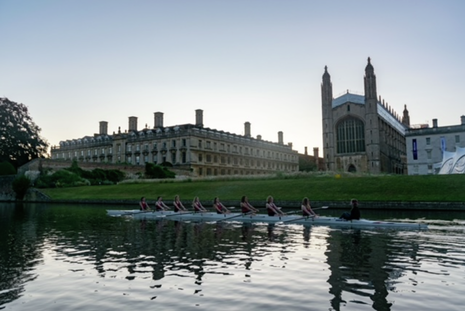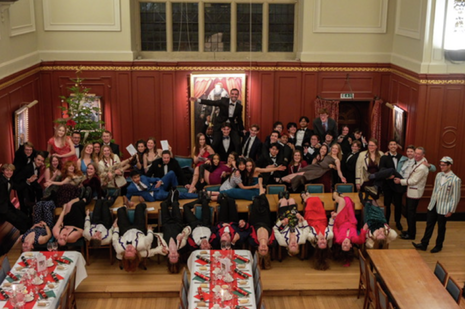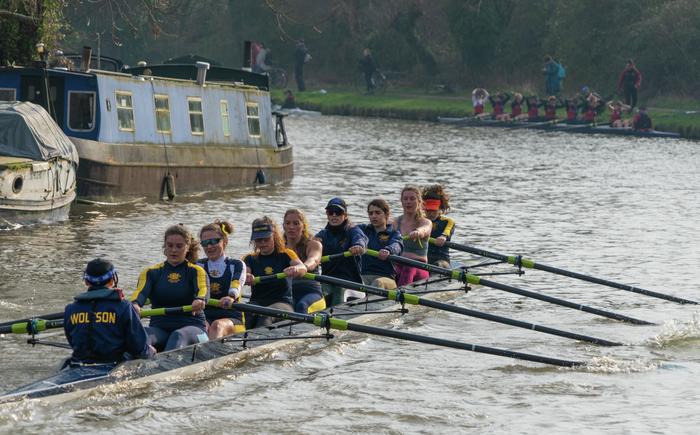Boaties and BCDs: inside Cambridge rowing culture
6am alarms, blistered hands, and intense training regimens: what keeps Cambridge’s rowers in the boat?

At some point during every rower’s time at Cambridge, they’ll be asked the same question by exasperated friends: why do you do it? With regular 6am alarms, blistered hands, and intense training regimens, it remains a mystery to the uninitiated why thousands of Cambridge students devote their free time to the sport. The common explanation: it must be some kind of cult. I spoke to six rowers to discover what keeps the students in the boat.
Chinazo learnt to row at Emmanuel Boat Club two years ago and this year spent time training with the Cambridge University Boat Club (CUBC). To her, the appeal of the training process is the “one action that you repeat over and over again, and you’re trying to perfect”. Chasing perfection with each stroke may seem monotonous, but for problem-solving minds it can be an addictive challenge.
On the other hand, the process has a payoff which attracts another kind of rower: those who love the thrill of racing. Luca, who also rows with CUBC, has competed in two Boat Races and considers racing to be the highlight of the sport. While he acknowledges that the repetitive motion of rowing can be a form of mindfulness – giving busy students “brainspace” from the worries of Cambridge life – for him, the best part is the satisfaction of a race, when all the hard work pays off. With biannual Bumps, races organised by town clubs, and as many as nine college-run competitions throughout the year, there’s no shortage of racing opportunities on the Cam.
“Early mornings, blisters, lactic acid – discomfort is the double-edged sword of rowing”
Yet, the rowing lifestyle can be a hard sell to freshers, once the novelty and the free snacks plied upon them by Lower Boat Captains wear off. Early mornings, blisters, lactic acid – discomfort is the double-edged sword of rowing. Finding the ability to get through this difficult process can surprise many students, whether they’re seasoned athletes or did their first ever race in Michaelmas at Emma Sprints Regatta.
Heidi, who learnt to row at Sidney Sussex last year and now represents her college in W1, says that although the sport can attract “resilient people”, it can also challenge students in a new way that helps them discover their own strength, both mental and physical. “For me, I think it allowed something that had been deeper down within me to be unlocked, an amount of self-discipline and drive that I hadn’t managed to find through a sport before,” she reflects.
It’s easy to take for granted the ubiquity of rowing at Cambridge, but the University’s collegiate system and subsidised facilities provide a uniquely accessible opportunity to row in the UK. Of the 530 clubs recognised by British Rowing, the University of Cambridge hosts 36: the 31 College clubs, the University Boat Club, and separate clubs for the medics (Addenbrooke’s), the Theological Colleges and the Vet School. Luca, who has rowed with town, college, university, and international clubs, attests that Cambridge is a special environment in the rowing world, in part because of the sheer number of people around who understand and care about the sport. Cambridge’s system of semi-independent, college-run boat clubs drastically increases the number of people who can learn to row. In last year’s May Bumps, 154 crews competed – that’s 154 coxes and 1,232 rowers.
When they’re not on the river (or doing their degree), how do these hundreds of rowers spend their time, and why do they spend so much of it together? Like many other college sports, rowing allows students to meet new people and be part of a university-wide community. But, unlike many other college sports, crew members spend upwards of 12 hours a week together – an intense lifestyle which fosters support networks unlike any other sport, according to Chinazo. Likewise, Heidi and her friends learnt to row at Sidney Sussex Boat Club as freshers, and they remember the process as a powerful bonding experience. As one Churchill M1 rower confirmed, “the people are what make it worthwhile. Everything else is an added bonus.”

The highlight of the social calendar is the Boat Club Dinner (BCD), a formal dinner held by every boat club to celebrate their rowing achievements that term. For Chinazo, “BCD is one of the few times where everyone comes together and you can just all have a massive good laugh and relax after a really stressful time.” BCD tradition includes inviting alumni, coaches and boatmen to join the three-course meal. Captains give speeches about the progress and achievements of their crews, and at some colleges like Pembroke, Downing and St John’s, the whole club joins together to sing the boat club song. In a less ancient tradition, rowers from across the university finish their nights of celebrations with a ‘post-BCD MASH’ trip, filling out the venue with boat club blazers and rowing chat.
The chat isn’t limited to the boat club showers and the MASH smoking area, however. Social media provides another outlet for the hundreds of rowers at Cambridge to connect, discuss the sport, and celebrate their teammates. Rowbridge Reborn, the rower’s equivalent of Camfess, has over 2,300 followers on Facebook and receives around 50 submissions per day on average – although this figure triples during the weeks of Bumps. The page is filled with memes, friendly rivalries, appreciations of fellow teammates and occasionally, lovelorn rowers “shooting their shots with river crushes”. The page’s admin added that providing all the latest “goss” from that morning adds an extra “element of excitement”, connecting rowers across the university like an informal news network.
“The intensity of rowing culture can often lead to it being referred to as a ‘cult’”
Alongside its many physical and social benefits, the intensity of rowing culture can often lead to it being referred to as a ‘cult’ – one 2018 Varsity article described the University’s focus on the sport as an “unhealthy fixation”. Chinazo mentions the criticisms levelled at rowers: “this is all you talk about, these are the only people you hang out with”. Evidently, attitudes vary from person to person, but different clubs and crews can encourage varying levels of enthusiasm (or obsession, depending on who you ask).
Rowers on First Boats, as the most involved in the sport, are usually the keenest. On the other hand, the culture in lower boats can be less all-consuming – Nicky compares it to the vibes of an “after-school club”, emphasising the more relaxed and fun-oriented atmosphere. As with most things, there are some who take it to extremes. “I know people for whom it is their personality,” Nicky admits, but also adds: “I don’t think it’s a bad thing – everyone is entitled to have their passions!”
Going to Cambridge provides countless unique opportunities. Some people become hugely invested in theatre, some in the Union, some in their JCR or May Ball committees – but each year, thousands of Cambridge students give their time to rowing. It may not be the poetic triumph of The Boys in the Boat or the stuff of Olympic medals, but for most students who row at Cambridge, the sport is at the heart of their university experience. It’s a hot dinner with eight friends; it’s the bell ringing before your first Bump; it’s a pink sunrise over the misty Cam.
 News / Cambridge students set up encampment calling for Israel divestment6 May 2024
News / Cambridge students set up encampment calling for Israel divestment6 May 2024 News / Cambridge postgrad re-elected as City councillor4 May 2024
News / Cambridge postgrad re-elected as City councillor4 May 2024 News / Some supervisors’ effective pay rate £3 below living wage, new report finds5 May 2024
News / Some supervisors’ effective pay rate £3 below living wage, new report finds5 May 2024 Fashion / Class and closeted identities: how do fits fit into our cultures?6 May 2024
Fashion / Class and closeted identities: how do fits fit into our cultures?6 May 2024 Features / Cambridge punters: historians, entertainers or artistes? 7 May 2024
Features / Cambridge punters: historians, entertainers or artistes? 7 May 2024






